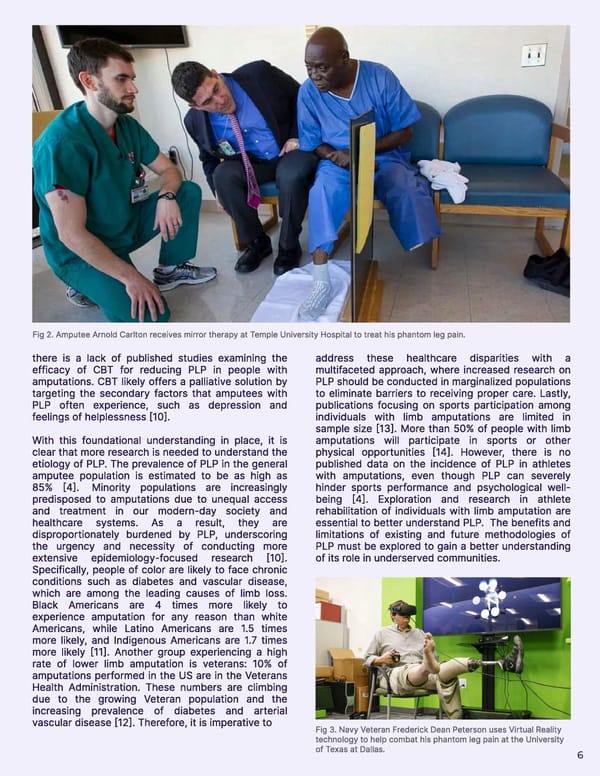Fig 2. Amputee Arnold Carlton receives mirror therapy at Temple University Hospital to treat his phantom leg pain. there is a lack of published studies examining the address these healthcare disparities with a efficacy of CBT for reducing PLP in people with multifaceted approach, where increased research on amputations. CBT likely offers a palliative solution by PLP should be conducted in marginalized populations targeting the secondary factors that amputees with to eliminate barriers to receiving proper care. Lastly, PLP often experience, such as depression and publications focusing on sports participation among feelings of helplessness [10]㠀 individuals with limb amputations are limited in sample size [13]. More than 50% of people with limb With this foundational understanding in place, it is amputations will participate in sports or other clear that more research is needed to understand the physical opportunities [14]. However, there is no etiology of PLP. The prevalence of PLP in the general published data on the incidence of PLP in athletes amputee population is estimated to be as high as with amputations, even though PLP can severely 85% [4]. Minority populations are increasingly hinder sports performance and psychological well- predisposed to amputations due to unequal access being [4]. Exploration and research in athlete and treatment in our modern-day society and rehabilitation of individuals with limb amputation are healthcare systems. As a result, they are essential to better understand PLP. The benefits and disproportionately burdened by PLP, underscoring limitations of existing and future methodologies of the urgency and necessity of conducting more PLP must be explored to gain a better understanding extensive epidemiology-focused research [10]. of its role in underserved communities.䃰 Specifically, people of color are likely to face chronic conditions such as diabetes and vascular disease, which are among the leading causes of limb loss. Black Americans are 4 times more likely to experience amputation for any reason than white Americans, while Latino Americans are 1.5 times more likely, and Indigenous Americans are 1.7 times more likely [11]. Another group experiencing a high rate of lower limb amputation is veterans: 10% of amputations performed in the US are in the Veterans Health Administration. These numbers are climbing due to the growing Veteran population and the increasing prevalence of diabetes and arterial vascular disease [12]. Therefore, it is imperative to Fig 3. Navy Veteran Frederick Dean Peterson uses Virtual Reality technology to help combat his phantom leg pain at the University of Texas at Dallas. 6
 Penn Healthcare Review Fall 2023 Journal— Sports Medicine Page 10 Page 12
Penn Healthcare Review Fall 2023 Journal— Sports Medicine Page 10 Page 12